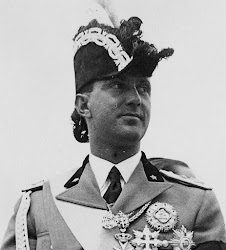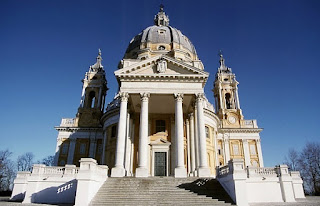Savoy king won new territory and power for his descendants
 |
| Charles Emmanuel III was a skilled soldier who found himself in demand |
He became king after his father, Victor Amadeus II, abdicated his throne in 1730. Charles Emmanuel later had his father arrested when he tried to intervene in affairs of state, and had him confined to a castle for the remainder of his years.
Charles Emmanuel had a military and political education and, after he became an adult, other European countries often sought his aid in conflicts because of his skills. After becoming King of Sardinia-Piedmont, he joined in the War of the Polish Succession on the side of France and Spain.
The war was supposedly to determine who was going to be the next King of Poland, but its main results were a redistribution of Italian territory and an increase in Russian influence over Polish affairs.
Charles Emmanuel sent troops to occupy Milan and then scored a brilliant success at the Battle of Guastalla, which took place in Emilia-Romagna in 1734. After the subsequent Treaty of Vienna, he gained the cities of Novara and Tortona in Piedmont.
During the War of the Austrian Succession, which began in 1740, Charles Emmanuel fought against the Spanish and French, who had designs on Milan, as he himself did. He inflicted a crushing defeat on the French at the Battle of Assietta in 1747. At the end of the war, because he was an astute negotiator, he was able to regain Nice and Savoy for his family and obtain Vigevano in Lombardy and territory in Pianura Padana, as a result of the Treaty of Aix-La-Chapelle in 1748.
He then concentrated on carrying out administrative reforms and maintaining a well-disciplined army and did not participate in the Seven Years War, which started in 1756 and involved many of the major European powers at the time.
 |
| The Battle of Assieta, in which Charles Emmanuel scored a notable victory |
His father, Victor Amadeus II, was the first head of the Savoy family to acquire a royal crown, having been given the Kingdom of Sicily because of the part he played in the war of the Spanish Succession. He was crowned King of Sicily, but was later forced to exchange Sicily for the less important Kingdom of Sardinia.
However, Victor Amadeus II had begun to show signs of melancholy (nowadays known as depression) after becoming King of Sardinia, and he abdicated his throne and retired from the royal court completely in 1730.
But after spending some time at his residence in Chambery in France, Victor Amadeus II started to intervene in his son’s government. He accused Charles Emmanuel of incompetence and reclaimed the throne, establishing himself in the Castle of Moncalieri, a Savoy residence in Piedmont.
 |
| Victor Amadeus III, who was Charles Emmanuel's heir |
Charles Emmanuel was married three times. His wives all died young, although between them they bore him 13 children.
He was a keen art collector and added to the collections of art treasures built up by his Savoy ancestors. The Flemish battle painter Jan Peeter Verdussen was his court painter and painted many of his military victories.
Charles Emmanuel died in 1773 in Turin at the age of 71 and was buried in the Basilica of Superga. He was succeeded by his eldest surviving son, who became Victor Amadeus III.
 |
| A view over the city of Turn at dusk, with the Alps forming a distant backdrop |
The region of Piedmont in northern Italy is the second largest after Sicily. It borders France, Switzerland and the Italian regions of Lombardy, Liguria, Aosta Valley and a small part of Emilia-Romagna. Piedmont was acquired by Otto of Savoy in 1046 and its capital was established at Chambery, which is now in France. The Savoy territory became the Duchy of Savoy in 1416 and the seat of the Duchy was moved to Turin in 1563 by Duke Emanuele Filiberto. After Victor Amadeus II became King of Sardinia in 1720, Piedmont became part of the Kingdom of Sardinia and Turin grew in importance as a European capital city.
 |
| The Castello di Rivoli, where Charles Emmanuel II had his father confined, now houses a museum |
The Castello di Rivoli, where Charles Emmanuel III had his father confined, was acquired by the House of Savoy in the 11th century. It probably dates back to the ninth century. It became one of the many royal residences in Turin belonging to the Savoy family. It is currently home to a museum of contemporary art. In 1997 it was placed on the UNESCO World Heritage site list, along with 13 other residences belonging to the House of Savoy. It is located in Rivoli, a municipality of almost 47,000 inhabitants about 15 km west of Turin, within the city’s metropolitan area. The castle complex suffered serious damage during repeated sieges inflicted by the French during the War of the Spanish Succession at the beginning of the 18th century and had to be rebuilt, with several architects playing a role, including Michelangelo Garove, Antonio Bertola and Filippo Juvarra.
Also on this day:
1538: The birth of painter Gian Paolo Lomazzo
1575: The birth of Maria de' Medici, Queen of France
1977: The birth of astronaut Samantha Cristoforetti
1925: The birth of chocolatier Michele Ferrero
1993: The birth of rugby player Tommaso Allan




_(cropped).jpg)






























